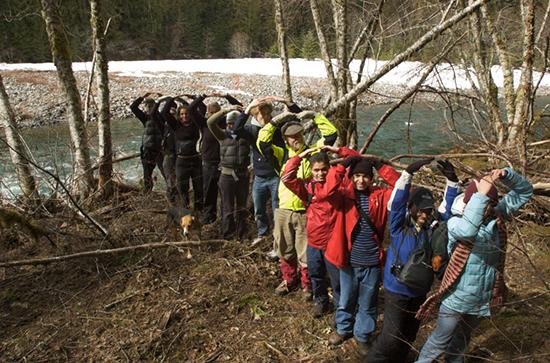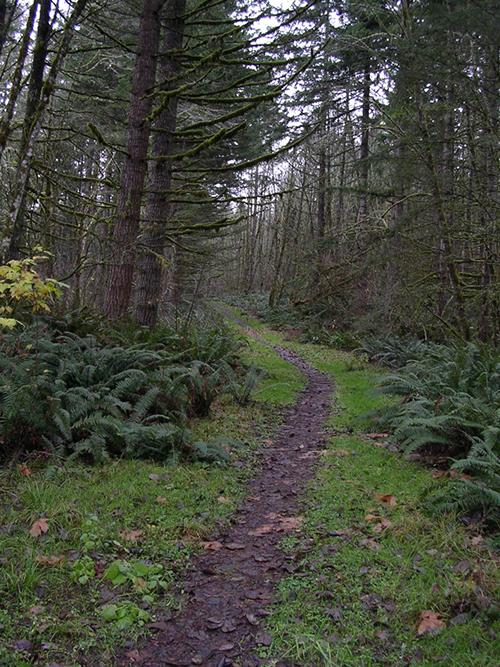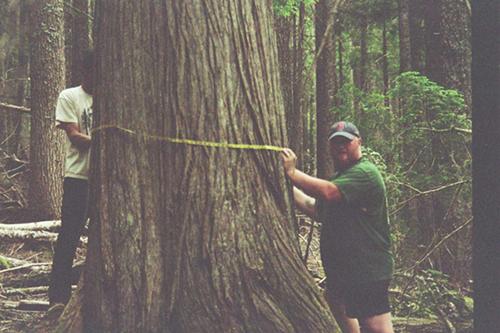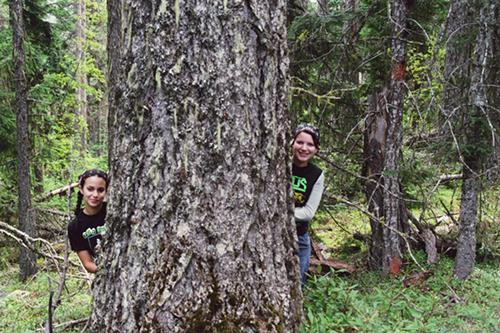 Palomar LNG Pipeline
Palomar LNG PipelinePALOMAR PIPELINE CANCELED!!!On March 23rd, 2011, the Palomar Pipeline Company withdrew its permit application at the Federal Energy Regulatory Commission. This marks a major victory for Bark and removes the most significant forest-wide threat facing Mt. Hood. Company officials claim they are re-tooling their project and may submit a new application as early as 2012. As Bark stated in the Oregonian article covering this incredible news, when and if they come back with a proposal to illegally go through the Mt. Hood National Forest and weaken protections for wild and scenic rivers Bark will be there to stop them again. As of August 2012, the Forest Service has removed the Palomar Pipeline from their list of proposed actions and all NEPA processing has been suspended. Although the Liquefied Natural Gas (LNG) battles have been mostly fought out on the coast of Oregon we saw the issue come to roost in Mt.Hood National Forest in 2007 when the Federal Energy Regulatory Commission (FERC) initiated the NEPA process to allow Palomar Gas Transmission (PGT), a company who transports natural gas, to place a pipeline from the Columbia River where the LNG Terminals are proposed down through Molalla and across the national forest to meet up in Madras with existing pipeline.This proposal would include a clearcut corridor for the pipeline as well as new road construction for access to the pipeline. The corridor would cross Fish Creek and the Wild and Scenic Clackamas River. These are key watersheds that include already compromised older forests. The corridor would amount to an approx. 720-acre clearcut. More...
 Nestle Bottling Plant
Nestle Bottling PlantNestle has proposed to build a new bottling plant in the town of Cascade Locks on the Columbia River, capturing the pristine water of Oxbow Springs. Nestle would like to tap up to 100 million gallons of water a year from the Oxbow Spring. The spring is part of the Herman Creek watershed, known for its outstanding trail system. Herman Creek is also a thermal refuge for threatened steelhead. Currently, the spring supplies water for a salmon and steelhead hatchery run by the Oregon Department of Fish and Wildlife (ODFW).There are many steps Nestle would have to take to make its dream of reaping enormous profits by bottling Mt. Hood 's pristine water come true. Right now the Oregon Water Resource Department (ORWD) is considering a water exchange between the City of Cascade Locks and ODFW that would allow Nestle to purchase the water from the city. They need to make a decision before any additional steps can be taken. We will keep you posted on any developments in this process. Should Nestle become a customer of the municipal water supply in Cascade Locks, they would be purchasing the water for a bargain of a fifth of a cent per gallon. Nestle would then sell this same gallon for about a buck and a half, a 1500 percent profit!Advocates of this proposal like to point out that a water bottling plant would provide 50 jobs in economically depressed Cascade Locks. Yet there is no guarantee that these jobs will go to locals. Also, if this project comes to fruition, large trucks will be barreling through downtown Cascade Locks every eight minutes, causing noise and pollution in this quiet and scenic town and the adjacent Columbia River Gorge National Scenic Area. We hope the Governor 's office will join us in opposing Nestle 's plan. We do not believe that Mt. Hood 's water should be sold in polluting plastic bottles for huge profits by a multinational corporation with a long history as a bad actor. The Keep Nestle out of the Gorge Coalition, which Bark is a member of, has been working with our policy makers and concerned citizens to educate the community on this issue. If you are interested in this effort, please contact our office and we will find a way to get you involved. More...
 Mt. Hood Off-Highway Vehicle Plan
Mt. Hood Off-Highway Vehicle PlanThe Forest Service has finalized its plan for ATVs, dirtbikes, and other off-highway vehicles (OHVs) in Mt. Hood National ForestPrior to this decision Mt. Hood was open to OHV use everywhere that wasn 't posted closed. 36 percent of Mt. Hood 's 1.1 million acres were open for OHV use. OHV use was allowed on 2,463 miles of roads and cross country travel was allowed. With this decision OHV users will be limited to about 143 miles of designated roads and trails in LaDee Flats, McCubbins Gulch, and Rock Creek. The Forest Service received thousands of comments, including 715 from Barkers, on its draft EIS. The agency considered creating OHV areas in extremely sensitive parts of the forest including Bear Creek, Peavine, Graham Pass, Mt. Defiance, and Gibson Prairie. However, they received overwhelming opposition from its own experts, other agencies, and the public. Fortunately these areas have been spared. 53 percent of people who visit Mt. Hood come to hike and only .52 percent of Mt. Hood 's visitors are there to ride ATVs, dirtbikes, and other OHVs. While OHV users are only a small percentage of Mt. Hood 's visitors, they have had a substantial adverse impact on the forest. Bark is pleased that the Forest Service listened to the thousands of Oregonians who asked them to protect our drinking water, wildlife habitat, and quiet recreation opportunities from noisy polluting OHVs. While this decision is an important step in the right direction, we will continue to monitor OHV use in Mt. Hood and the effectiveness of this plan at reducing the harm caused by OHVs. More...
 Gordon Creek
Gordon CreekThe Gordon Creek Timber Sale is proposed in public forests administered by the Bureau of Land Management (BLM). This project proposes to log over the intake for the Corbett Water District. The Corbett Water District, as well as the Portland Water District has come out against this project.According to the maps (see below) it will log a mix of young and old-growth forest. As well, there are eight miles of new roads proposed. In March 2009, the BLM released a revised Environmental Assessment (EA) dropping some acres of the old-growth and expanding the no-cut buffers on the streams, thanks to the many comments that were sent in response to the first EA. They continue to plan logging on steep slopes along the Gordon Creek and have lifted some of the seasonal restrictions. We encourage people, if you have been to this timber sale and have not submitted comments, to do so before April 6th to the contact listed below. You can review the updated EA, posted below as well.If you have questions about this update, please contact Amy Harwood at 503.331.0374 or email amy (at) bark-out.org to find out how to get involved. More...
 Annie 's Cabin, Missouri Ridge and 2006 Thinning Projects
Annie 's Cabin, Missouri Ridge and 2006 Thinning ProjectsThe Salem District of the Bureau of Land Management released the Decision Rationale for the Annie 's Cabin thinning project and Bark submitted a lawsuit in September 2007. The project has been decreased due to red tree vole presence. On recent groundtruthing trips, Barkers have discovered Oregon Slender Salamander. The Environmental Assessment claimed they were not present, however this species has special management requirements. The project falls partially within the Molalla River Recreation Corridor. The following four project areas will affect 6 watersheds (in parentheses) Annie 's Cabin (Upper Molalla River watershed), Missouri Ridge (Rock Creek and Pudding River watersheds), Snakehouse (Little and Middle North Santiam), and Round Mountain (Crabtree Creek and Hamilton Creek). A total of 566 acres will be thinned, including 85 acres of Riparian Reserves. Road construction would include the following a mile of new road construction up to 20 miles of road would be renovated and 0.6 miles of road would be improved. Upper Willamette River (UWR) Chinook salmon, UWR steelhead trout (both threatened species) inhabit areas just downstream, but the BLM has found that the logging May affect is Not Likely to Adversely Affect ' the populations. 246 acres of dispersal habitat for the Northern spotted owl (threatened) will also be logged. ' More...
 Cloak
CloakThis sale is a combination of two different logging projects, the Oak Grove thin (mainly located on the Oak Grove fork of the Clackamas) and the Upper Clackamas thin.Bark has decided not to appeal this sale due to the fact that the USFS reduced acreage and reduced road miles per our request. We also wanted to test out the new Stewardship Contracting authorities, which are designed to direct the the proceeds for the sale towards restoration projects on the Forest. We are working with a collaborative group to make this happen and will see what we think after the restoration projects have been accomplished and the logging has been carried out. We 'll then evaluate participating on these projects in the future. Various pieces of this logging project have been sold and logged. Initial monitoring of these logged units has raised a number of concerns such as damaged soils, logged deciduous trees (losing the small amount of diversity present), logged large trees with saved small trees, heavy road construction (1.8 miles of temporary 'roads and 3.4 miles of new roads). On the plus side, the remaining trees do not display the damage typically found after a logging operation. Whether or not this "restoration " stewardship project is appropriate for an area that the forest service plans on clearcutting ( 'even aged management ') is the key question.As found on page 2 of Appendix E for the Cloak logging project the eventual plan for the area appears to be a clearcut. 'Evenaged management is the optimal appropriate silvicultural systemand commercial thinning is the optimum harvest method for thosestands prescribed for treatment because it meets the objectives of theNORTHWEST FOREST PLAN the MT HOOD FOREST PLAN and therecommendations of the UPPER CLACKAMAS LOWERCLACKAMAS and OAK GROVE WATERSHED ANALYSES. Thesestands have not reached culmination of mean annual increment forfiber production. ' More...
 Polallie-Cooper
Polallie-Cooper5/12/05 We were delighted to learn that the Forest Service has withdrawn the Polallie-Cooper Sales. So this logging project is now canceled! This is a huge victory for Mt. Hood, for those who rely on the Crystal Springs Watershed for drinking water, and all those who enjoy this wild area near Cooper Spur. More...










